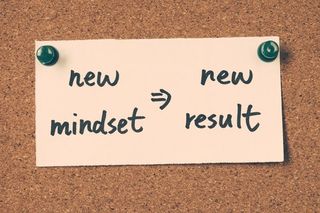I was shocked! And slightly disappointed in myself. In hindsight perhaps I shouldn’t have been, but I was – even though I suspect change professionals are just as prone to it as the rest of humanity. It highlighted something we probably all do often every day but that professional change managers should always guard against.
Most professional change managers are inured to the fact that one of the most challenging aspects of their role is dealing with, and overcoming, “resistance to change.” This idea is ingrained and permeates everything we do. As a result we never challenge the precept. Reading Patrick Hoverstadt’s outstanding book, “The Fractal Organization” forced me to do so. He claims that “Resistance is what happens when you mess up the design process; it is the outcome of a badly planned change programme. Resistance is the consequence of failure, not the cause of it.”
Perhaps you can see now why I was shocked. This is not something we want to hear as change professionals. It takes everything we have learned in our profession and turns it completely on its head. Whether you believe it or not, actually doesn’t matter; it compels you to think more deeply about what you are doing.
I can readily accept what Hoverstadt is telling us as I have always been intuitively uncomfortable with the term ‘change manager.’ For me, all management is about change. Any manager is a bridge between the present and the future; accountable for both current processes and their adaptation for future ‘fit.’ The lesson here is that we should always challenge our beliefs and never blindly accept things at face value. Especially as a manager or change manager. Because it ultimately boils down to the ‘filters’ to learning that I described last week.
These filters are the mindsets we bring to any situation or challenge. Only they do not apply solely to learning, but to all thinking. Thus they stimulate or anaesthetise innovation and shape any change. Whether individual and subjective, or organisational and cultural or, as in this example, simply prevailing conventional wisdom, they act as inhibitors to thinking, to performance or, ultimately, to both.
So in that light, let’s take a closer look at what Hoverstadt is saying and see what fresh insights it opens up.
He certainly challenges the common belief that human beings are naturally resistant to change. And, if you think about it, is justified in doing so. As a species humankind is distinguished by intelligence and the ability to alter its environment. The technological development the world has witnessed in the past half-century is evidence enough. The ubiquitous use of mobile phones – something that barely existed thirty years ago – hardly suggests a resistance to change. On the contrary, it proves a massive readiness to embrace change. In which case, you have to question whether resistance to change is really normal and natural.
Rejecting this obliges you to, at least, probe Hoverstadt’s idea that resistance to change is “the outcome of a badly planned change programme.” This not only begs the question, “Why?” but also compels you to consider, “How do I rectify this?”
Certainly the idea that resistance is a consequence rather than a cause suggests a completely different starting point. Rather than approach change as something that you expect people to do, you have to inspire people to want to change. This means creating an environment in which people have the understanding and autonomy to initiate and execute appropriate changes themselves. Once again, it boils down to creating a culture where every individual matters.
Ultimately this isn’t as shocking as it first seemed. (It certainly fits with my own mind set!) In order to see it, however, I needed a different perspective. This only happened when I changed the filter through which I was thinking and operating. Yet it was a filter I didn’t even know was there. I cannot help wondering how many other such filters I have, but I am resolved, in future, to challenge more, things I take for granted.
But remember, we all have such filters. And they all affect our lives and our organisations. It may be that the best way to protect ourselves against their inhibiting effects – and to ensure successful change – is to listen more to other people and actively think about their point of view. Which is another way of saying, “every individual matters.”
_____________________________________________________________________________
Contact me today for a free 30 minute conversation about how my ‘Every Individual Matters’ model can help you create an organisational culture that embraces change and transforms – and sustains – organisational performance.
_____________________________________________________________________________
Bay is the founder and director of Zealise, and the creator of the ‘Every Individual Matters’ organisational culture model that helps transform organisational performance and bottom-line results. Bay is also the author of several books, including “Lean Organisations Need FAT People” and “The 7 Deadly Toxins of Employee Engagement.”

